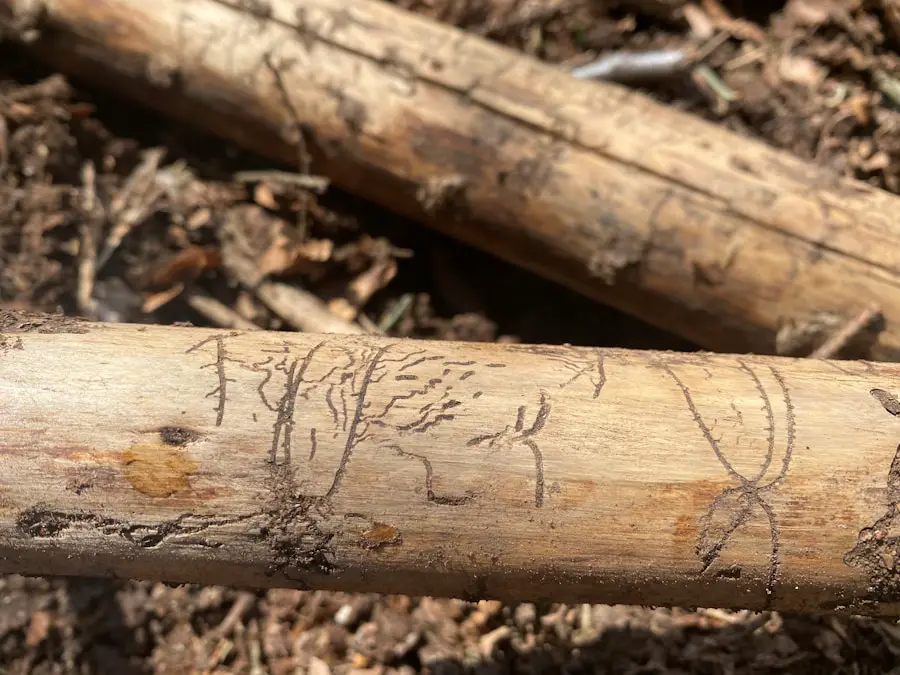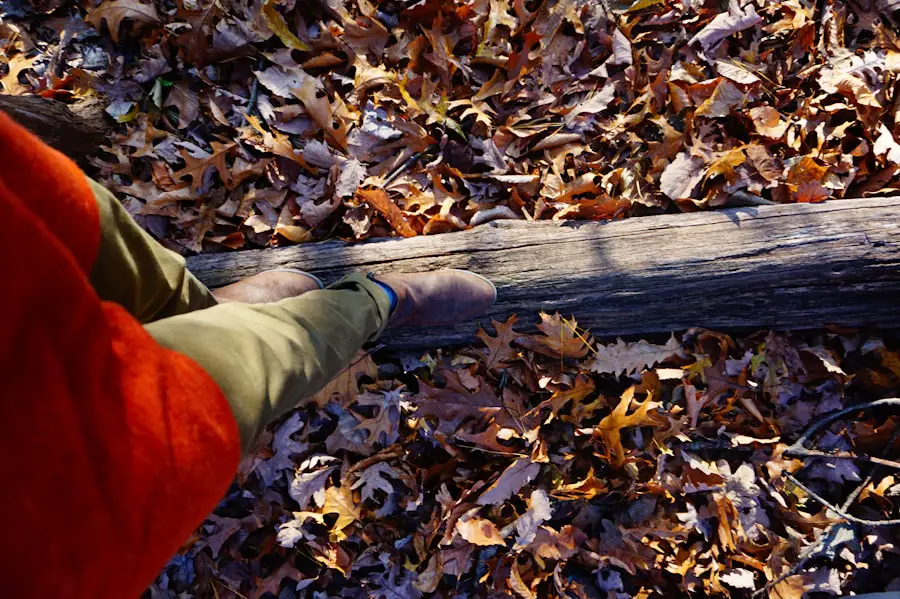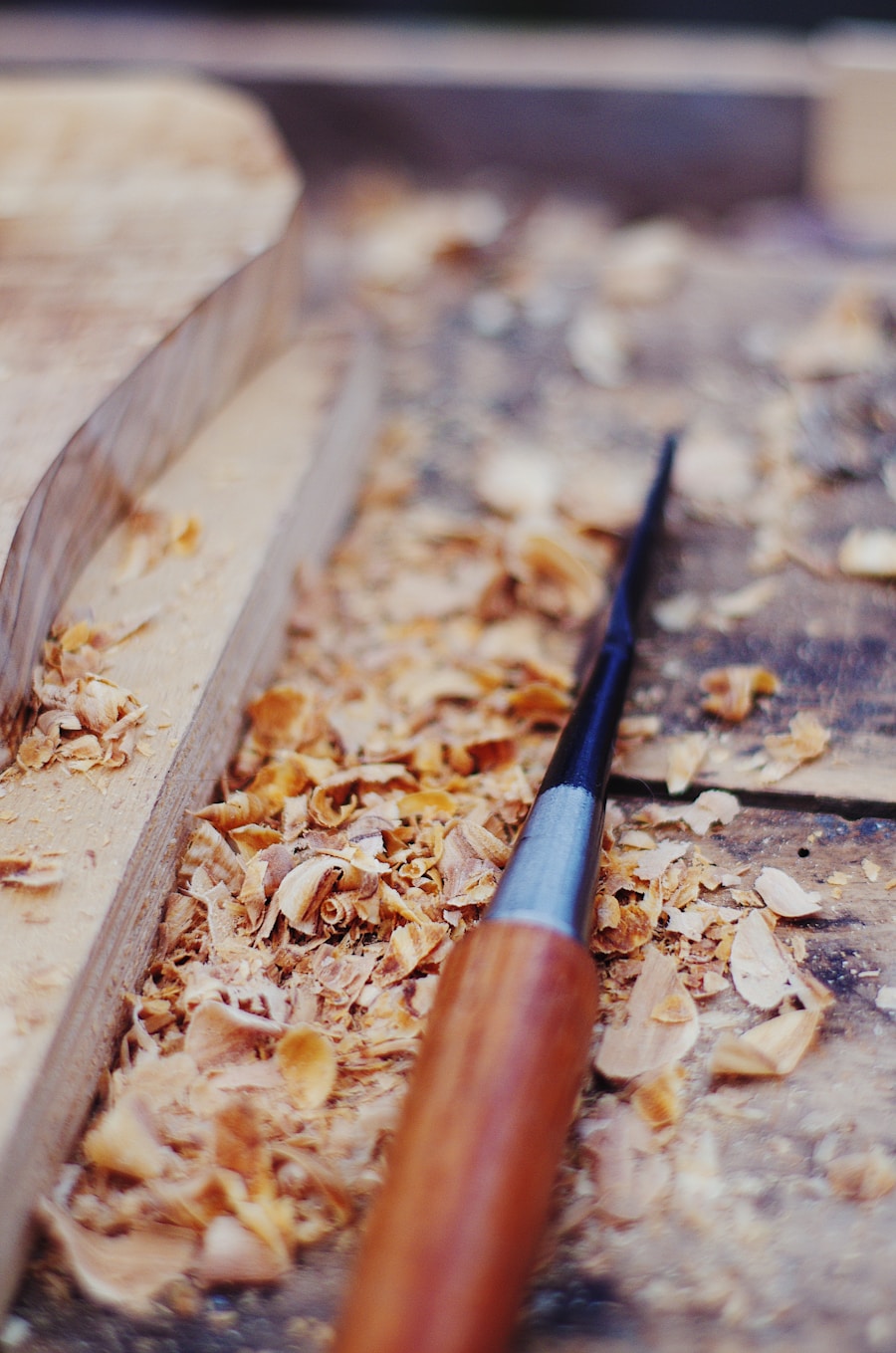Hiking sticks, also known as trekking poles or walking sticks, have been utilized for centuries by outdoor enthusiasts for various reasons. These tools not only provide stability and support on uneven terrain but also enhance the overall hiking experience. The act of carving your own hiking stick adds a personal touch, transforming a simple tool into a unique piece of art that reflects your personality and journey.
The process of creating a hiking stick can be both therapeutic and rewarding, allowing you to connect with nature while honing your craftsmanship skills. The resurgence of interest in traditional crafts has led many to explore the art of stick carving. This practice is not merely about functionality; it is also an expression of creativity and individuality.
Each hiking stick tells a story, whether it’s the wood from a tree that holds special memories or the intricate designs that showcase personal milestones. As you embark on this journey of crafting your own hiking stick, you will discover the joy of working with natural materials and the satisfaction that comes from creating something with your own hands.
Key Takeaways
- Hiking sticks are essential tools for hikers, providing stability and support on rough terrain.
- When selecting wood for your hiking stick, consider durability, weight, and aesthetics.
- Basic tools and materials for carving a hiking stick include a knife, sandpaper, and a wood finish.
- Beginners can start carving by removing bark and shaping the stick with simple cuts and techniques.
- Personal touches such as carvings, paint, or decorative additions can make your hiking stick unique and personalized.
Selecting the Right Wood for Your Hiking Stick
Durable Hardwoods
Hardwoods such as oak, maple, and hickory are popular choices for crafting hiking sticks due to their strength and resilience. Oak, for instance, is known for its density and ability to withstand significant wear and tear, making it an excellent option for those who frequently hike in rugged terrains.
Lightweight Options
Maple offers a beautiful grain pattern and is relatively lightweight, which can be advantageous for long-distance hikes. In addition to hardwoods, some enthusiasts opt for softer woods like pine or cedar. While these woods may not be as durable as their hardwood counterparts, they are easier to carve and can still provide adequate support for casual hikers.
Sustainable Sourcing
Cedar, in particular, has natural resistance to moisture and decay, making it a suitable choice for those who hike in wet conditions. When selecting wood, consider the local availability of materials and the environmental impact of harvesting them. Sustainable sourcing not only benefits the environment but also adds a layer of meaning to your hiking stick.
Tools and Materials Needed for Carving

Before embarking on your carving journey, it is essential to gather the right tools and materials. A basic carving kit typically includes a carving knife, a whittling knife, and possibly a chisel set for more intricate designs. A carving knife with a comfortable grip allows for better control and precision during the carving process.
Whittling knives are particularly useful for shaping the wood and creating finer details. For those looking to add embellishments or patterns, a set of chisels can help achieve more complex designs. In addition to knives, you will need safety gear such as gloves and eye protection to ensure a safe carving experience.
A sturdy workbench or carving platform is also beneficial, providing stability while you work on your stick. Sandpaper in various grits will be necessary for smoothing out rough edges after carving. Finally, consider having wood finish or sealant on hand to protect your finished product from the elements.
These materials will not only enhance the appearance of your hiking stick but also prolong its lifespan.
Carving Techniques for Beginners
| Technique | Description | Difficulty Level |
|---|---|---|
| Whittling | Carving wood with a knife to create shapes and designs. | Easy |
| Chip Carving | Creating intricate designs by removing small chips of wood. | Intermediate |
| Relief Carving | Carving figures or designs into a flat piece of wood to create a 3D effect. | Intermediate |
| Power Carving | Using power tools such as rotary tools or electric chisels to carve wood. | Advanced |
For beginners, mastering basic carving techniques is essential before moving on to more advanced methods. Start by sketching your design on paper or directly onto the wood with a pencil. This preliminary step allows you to visualize the final product and make adjustments as needed.
Once you have a clear idea of your design, begin by removing larger sections of wood using your carving knife. Employing controlled cuts will help maintain the integrity of the wood while gradually shaping it into your desired form. As you gain confidence in your carving abilities, experiment with different techniques such as chip carving or relief carving.
Chip carving involves removing small chips from the surface of the wood to create intricate patterns, while relief carving adds depth by creating raised designs.
Both techniques can enhance the visual appeal of your hiking stick and showcase your artistic flair. Remember to take breaks during the carving process; this not only prevents fatigue but also allows you to step back and assess your progress.Adding Personal Touches to Your Hiking Stick
One of the most enjoyable aspects of crafting a hiking stick is the opportunity to infuse it with personal touches that reflect your identity and experiences. Consider incorporating symbols or motifs that hold significance for you—perhaps a favorite animal, a meaningful quote, or even geographical features that resonate with your hiking adventures. These elements can be carved into the wood or added through painting or burning techniques.
In addition to decorative elements, think about practical features that could enhance your hiking stick’s functionality. For instance, adding a rubber tip can improve grip on slippery surfaces, while a wrist strap can provide extra security during use. You might also consider attaching small tokens or charms that represent memorable hikes or milestones in your life.
These personal touches not only make your hiking stick unique but also serve as reminders of your journey every time you use it.
Sanding and Finishing Your Hiking Stick

Once you have completed the carving process, sanding is an essential step that cannot be overlooked. Sanding smooths out any rough edges left from carving and prepares the surface for finishing. Begin with coarse-grit sandpaper to remove larger imperfections, gradually moving to finer grits for a polished finish.
Pay special attention to areas where your hands will frequently make contact; these spots should be particularly smooth to ensure comfort during use. After sanding, applying a finish is crucial for protecting your hiking stick from moisture and wear over time. Natural oils such as linseed or tung oil can enhance the wood’s grain while providing a protective barrier against the elements.
Alternatively, polyurethane or varnish can offer a more robust protective layer but may alter the wood’s appearance slightly. Whichever finish you choose, ensure that it is applied evenly and allowed to dry thoroughly before taking your hiking stick into the great outdoors.
Using and Maintaining Your Carved Hiking Stick
Using your carved hiking stick effectively involves understanding its purpose and how it can enhance your hiking experience. When navigating uneven terrain, plant the stick firmly ahead of you to provide stability and balance as you traverse rocky paths or steep inclines. The stick can also be used to test the depth of water when crossing streams or to clear away debris from trails.
Proper technique not only maximizes the benefits of using a hiking stick but also minimizes strain on your joints during long hikes. Maintenance is key to ensuring that your hiking stick remains in good condition over time. Regularly inspect it for signs of wear or damage, particularly after extensive use in harsh conditions.
If you notice any cracks or splinters developing, address them promptly by sanding down affected areas and reapplying finish as needed. Store your hiking stick in a cool, dry place when not in use to prevent warping or deterioration caused by humidity or extreme temperatures.
Safety Tips for Carving a Hiking Stick
Carving can be an enjoyable yet potentially hazardous activity if proper safety precautions are not taken into account. Always prioritize safety by wearing protective gear such as gloves and safety goggles to shield yourself from sharp tools and flying debris during the carving process. Ensure that your workspace is well-lit and organized; this reduces the risk of accidents caused by misplaced tools or distractions.
When using sharp knives or chisels, maintain focus on your work and avoid rushing through cuts. It’s advisable to carve away from your body rather than towards it; this minimizes the risk of injury should you slip while cutting. Additionally, keep your tools sharp; dull blades require more force to cut through wood, increasing the likelihood of accidents.
By adhering to these safety tips, you can enjoy the rewarding experience of crafting a hiking stick while minimizing risks associated with this engaging craft.
If you’re looking to carve your own hiking stick for your next outdoor adventure, you may also be interested in checking out this article on the best hiking backpack for multi-day treks. Having the right gear is essential for a successful hiking trip, and a sturdy hiking stick can be a valuable tool to have on the trail. To read more about the best hiking backpack options, visit this article.
FAQs
What is a hiking stick?
A hiking stick, also known as a walking stick or trekking pole, is a long stick or pole used by hikers for support and stability while walking on trails or rough terrain.
Why should I carve my own hiking stick?
Carving your own hiking stick allows you to personalize it to your liking and create a unique and functional piece of gear for your outdoor adventures.
What materials do I need to carve a hiking stick?
To carve a hiking stick, you will need a sturdy stick or pole, carving tools such as a knife or chisel, sandpaper, and a finish such as varnish or oil.
How do I choose a suitable stick for carving?
Look for a straight and sturdy stick that is about shoulder height or slightly taller. It should be free of cracks, knots, and other imperfections that could weaken the stick.
What are some popular designs for carving hiking sticks?
Popular designs for carving hiking sticks include animal shapes, nature motifs, and geometric patterns. Some carvers also incorporate functional elements such as hand grips and compasses into their designs.
Are there any safety precautions I should take while carving a hiking stick?
When carving a hiking stick, it’s important to use sharp tools and work in a well-ventilated area. Always carve away from your body and keep your fingers and hands clear of the cutting edge to avoid accidents.
How do I finish and maintain a carved hiking stick?
After carving, sand the hiking stick to smooth out any rough edges, then apply a finish such as varnish or oil to protect the wood. To maintain the stick, periodically check for any signs of wear or damage and reapply the finish as needed.
